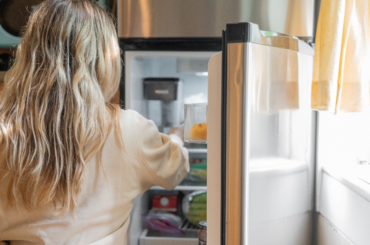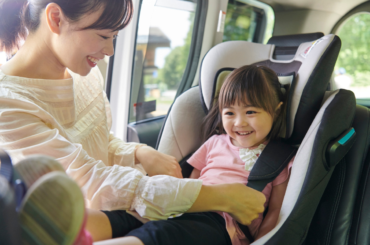As cities and states across the country begin to reopen, families are wondering if they should voluntarily continue social distancing—and if so, until when?
With each state setting its own quarantine guidelines and re-opening schedules, which sometimes seem to contradict current data from health officials, it’s no wonder families are confused about what to do. We met with Dara Kass, M.D., an emergency medicine physician and associate professor of medicine at Columbia University Medical Center in New York, to answer some of the most pressing questions families have about knowing when it will be truly safe to venture back out into a post-distancing world.
Should my family continue to practice social distancing until there’s a vaccine?
The medical community seems to agree that even with scientists working tirelessly toward both a vaccine and treatment, reliable versions of both likely won’t be widely available until next year, says Dr. Kass.
“It’s important to remember that we don’t social distance because we’re waiting for a vaccine or treatment, we do it to manage the virus,” she says. “Social distancing is a public health tool that helps us address the issue in the near term. Waiting until there’s either a vaccine or an effective treatment available is an unrealistic expectation.”
Social distancing—a practice that includes staying 6 or more feet from others outside your household, avoiding crowded places or gathering in groups, using face masks in public, and working from home when possible—is proven to help reduce the rate at which a contagious virus spreads through our communities. At some point, however, Americans are going to have to figure out how to decrease the practice of social distancing because “it’s impossible to expect people to stay home for a year,” she adds.
OK, if we’re not waiting for a vaccine—what signs can we look for as indicators our community is relatively safe?
The most important thing families can do when deciding when to begin re-engaging with their community is to check the prevalence of the infection in your area, including the testing capability. “One of the best resources for this is covidactnow.org, which provides hyper-local, county-based data in real-time,” Dr. Kass says. “When the contagion rate is less than 1.0 and fewer than 10 percent of tests for the virus are positive, you can start to venture out.” The contagion rate refers to the number of new people infected, on average, by someone who’s already infected. So, a contagion rate of less than 1.0 indicates the spread of the virus is slowing.
If you think your community is reopening for economic reasons and not because the public health threat is low, she suggests waiting until you see at least 14 straight days of decreasing infections and low positive test results.
The COVID Act Now website will also tell you the percentage of ICU beds that are available in your community, a key indicator that medical care is accessible should you or someone in your family need it. “It’s not about whether we have the vaccine, but rather it’s what’s happening in your community that’s key.” In other words, focus more on your zip code than what people in other states are doing. “If your community has a low rate of infection and you can get a test if you need it, then I would consider playdates with one family, for example.”
As communities open up, what can families do to remain as safe as possible?
Whenever you do go out, Dr. Kass recommends continuing to wear masks, wash hands frequently, and practice social distancing. “A drive-by playdate where you don’t touch, wear a mask, and stay six feet apart is ideal.”
Before you gather with others, Dr. Kass recommends these three guidelines:
- Ask if everyone in the household has remained isolated until now and check that no one in the home has contracted COVID-19.
- Make sure you’re able to track the people you have been in contact with, should one of you become ill. This is why it’s critical to avoid gathering in large groups, where tracking people down would be next to impossible.
- Set ground rules before you gather, so there are no surprises. This may include how closely the children can play and whether they’re allowed to share toys or books, for example.
For families with babies and toddlers who are too squirmy for masks and who love to touch everything, Dr. Kass suggests keeping them in a stroller when you venture out. “In those cases, don’t use a public playground and go out early when there are fewer people around. The goal is always to reduce the risk to your family as much as you can.”
If someone in the home is in a high-risk group, such as a grandparent or someone with an underlying condition, it’s important for everyone in the home to live as if they were high risk, too. “This means no playdates or outings for those caregivers. This situation is all about making a lot of small, deliberate decisions to keep everyone safe.”
What can parents do to balance the anxiety of going out, with the anxiety of potentially facing several more weeks quarantined if they don’t go out?
Even when armed with facts and access to data, many Americans still feel a ton of anxiety about the lifting of stay-at-home orders. A recent Pew Research Center survey reveals a third of Americans have experienced psychological distress during the COVID-19 pandemic.
For those in that group, Dr. Kass suggests taking it slow. “Stick to walks, bike rides, and simple outings. The most important thing to mitigate your fears is to start slowly and deliberately.” Remember, easing back on social distancing requirements isn’t an “on or off” scenario, like flipping a light switch. As long as it’s safe in your area to do so, you can expand the locations or frequency of your outings, for example, while still maintaining precautions such as wearing a face mask.
When you don’t have a choice whether to venture out…
Unfortunately, some families don’t have a choice regarding when they re-engage with their community. For those whose jobs or childcare situations require them to step out of isolation, ask the employer what practices are being put in place to protect you, and if it’s at all possible to stagger shifts or telecommute, suggests Leana Wen, M.D., an emergency physician and visiting professor at George Washington University Milken Institute School of Public Health. “Risk is cumulative: The more people you have contact with, the higher your risk of contracting the virus,” Dr. Wen told the Washington Post.
If you have to go to work, do everything you can to minimize contact with others and avoid public transportation if possible, adds Dr. Kass. As always, wear a mask and wash your hands as frequently as possible
For employees who are still concerned but find themselves at risk of losing their jobs if they refuse to return to work, “there are plenty of lawyers taking this on right now,” Dr. Kass says. The National Employment Law Project has a list of workplace safety rights and information on what to do if you want to file a complaint against your employer with the Occupational Safety and Health Administration. TIME also recently published information about federal laws that could protect you if you have health concerns about returning to work.
Whatever you do, keep in mind that everyone’s situation is different, so try not to compare yourself to other families. What’s right for them may or may not be right for you, and that’s OK. The most important thing is to stay informed about what’s happening in your area and with those around you, and to follow safe practices as much as possible.







